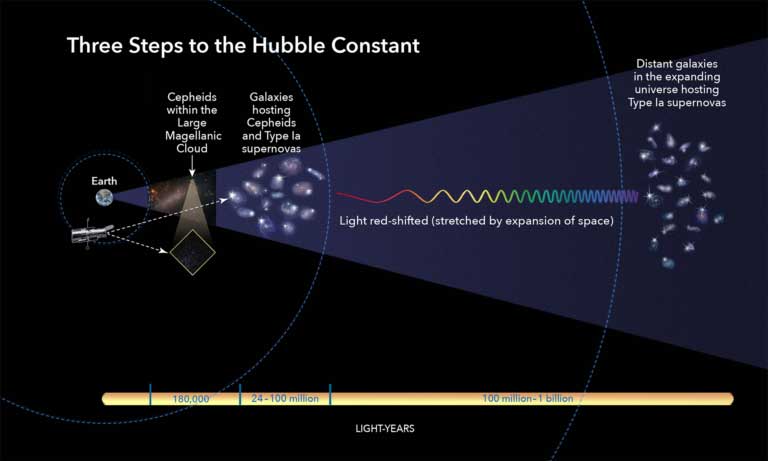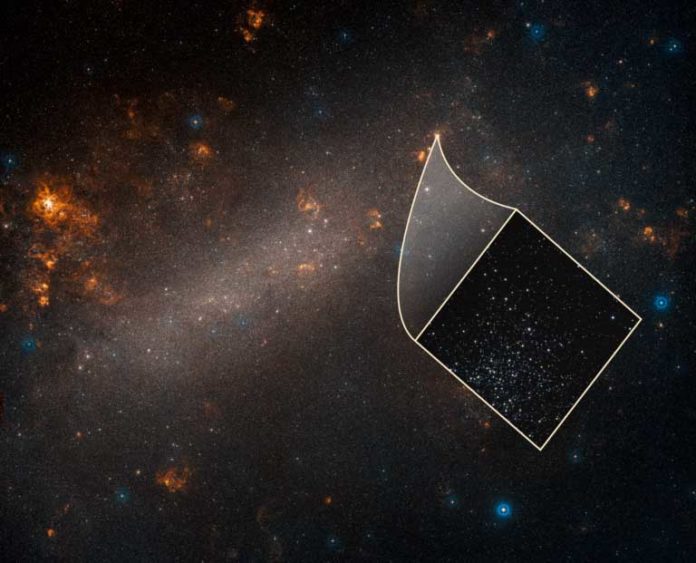The universe is expanding about 9% faster than expected based on its trajectory seen shortly after the big bang. This new revelation is made by using NASA’s Hubble Space Telescope diminish the odds that the difference is an accident from 1 of every 3,000 to just 1 out of 100,000 and propose that new physics might be required to better comprehend the universe.
During the study, scientists analyzed light from 70 stars in our neighboring galaxy, the Large Magellanic Cloud, using a method that allowed them to capture quick images of these stars, called Cepheid variables.
The usual method for measuring the stars is incredibly time-consuming; the Hubble can only observe one star for every 90-minute orbit around Earth. Known as DASH (Drift And Shift), this new method allows scientists to observe a dozen Cepheids using Hubble, in the same amount of time it would normally take to observe just one.
Gathering the data, scientists were able to reinforce the foundation of the cosmic distance ladder, which is utilized to determine the distances within the Universe, and compute the Hubble constant, an estimation of how quick the universe grows after some time.

Credit: NASA, ESA, and A. Feild (STScI)
Scientists then combined the data with another set of observations, made by the Araucaria Project, a collaboration between astronomers from institutions in Chile, the U.S., and Europe. This group made distance measurements to the Large Magellanic Cloud by observing the dimming of light as one star passes in front of its partner in eclipsing binary-star systems.
The combined measurements helped the scientists to determine the Cepheids’ real brightness. This precise result aid team in tightening the bolts of the rest of the distance ladder that uses exploding stars called supernovae to extend deeper into space.
As the team’s measurements have become more precise, their calculation of the Hubble constant has remained at odds with the expected value derived from observations of the early universe’s expansion by the European Space Agency’s Planck satellite based on conditions Planck observed 380,000 years after the Big Bang.
Adam Riess, Bloomberg Distinguished Professor of Physics and Astronomy at The Johns Hopkins University, Nobel Laureate, and the project’s leader said, “This is not just two experiments disagreeing. We are measuring something fundamentally different. One is a measurement of how fast the universe is expanding today, as we see it. The other is a prediction based on the physics of the early universe and on measurements of how fast it ought to be expanding. If these values don’t agree, there becomes a very strong likelihood that we’re missing something in the cosmological model that connects the two eras.”
Well, it is still a mystery that the discrepancy exists. Scientists ate further planning to fine-tune the Hubble constant, with the goal of reducing the uncertainty to 1%. These most recent measurements brought the uncertainty in the rate of expansion down from 10% in 2001 to 5% in 2009 and now to 1.9% in the present study.
Other authors on this paper include Stefano Casertano of the Space Telescope Science Institute; Wenlong Yuan of The Johns Hopkins University; Lucas M. Macri of Texas A&M University, and; Dan Scolnic of Duke University.
